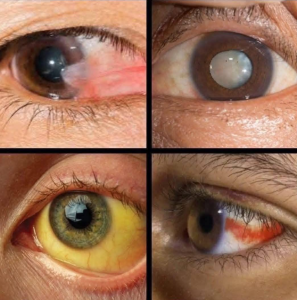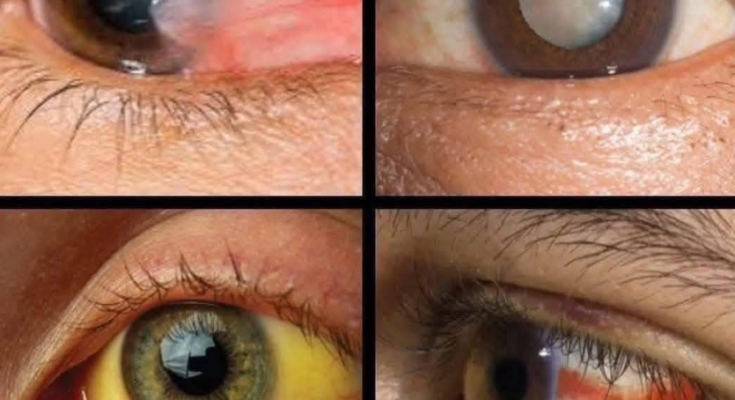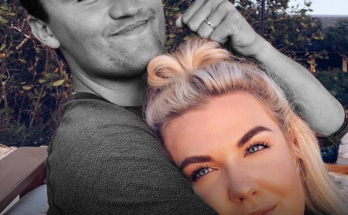
👁️ Signs in Your Eyes That Indicate What’s Beneath the Surface
They say the eyes are the windows to the soul. But they’re also windows to the body, the mind, and the quiet storms we carry. In a single glance, your eyes can whisper secrets about your emotional state, your neurological health, and even your deepest fears. They do not lie. They do not perform. They simply reflect.
Let’s explore the signs—subtle and profound—that your eyes may be trying to tell you something.
🌌 1. Pupil Dilation: The Language of Emotion
Your pupils are more than light sensors. They’re emotional barometers.
- Attraction or Interest: When you’re captivated—by a person, a piece of music, or a moment—your pupils dilate. It’s involuntary, a signal from your sympathetic nervous system that says, I’m engaged. I’m alive here.
- Fear or Excitement: The same dilation occurs in moments of danger or thrill. It’s the body preparing for heightened awareness, part of the fight-or-flight response.
But when pupils remain dilated without clear emotional triggers, it may suggest internal stress, drug use, or neurological imbalance. The eyes, in this case, are not just reacting—they’re warning.
🧠 2. Eye Movement: The Dance of Thought
The way your eyes move—quickly, slowly, erratically—can reveal your mental state.
- Rapid Eye Movement: Often linked to anxiety or overstimulation. It’s as if the mind is racing, and the eyes are trying to keep up.
- Avoidant Gaze: Looking away frequently may signal discomfort, shame, or fear. In trauma survivors, this behavior is common.
- Steady Eye Contact: Suggests confidence, presence, and emotional engagement. But too much eye contact can also be a mask—a learned behavior to appear composed.
In psychological assessments, eye movement is studied to detect conditions like ADHD, autism, and PTSD. The eyes don’t just see—they reveal how we process the world.
💧 3. Blink Rate: Stress in Motion
Blinking is automatic. But its rhythm can speak volumes.
- Frequent Blinking: Often a sign of stress, anxiety, or overstimulation. It’s the body’s way of coping with internal tension.
- Reduced Blinking: May indicate intense focus or, in some cases, neurological disorders. People with Parkinson’s disease, for example, blink less frequently.
In high-stress environments—interviews, public speaking, conflict—watch the blink. It’s the heartbeat of the eyes.
🌫️ 4. Redness and Dryness: The Body’s Cry
Red, dry, or irritated eyes are often dismissed as fatigue. But they can signal deeper issues.
- Chronic Dryness: May be linked to autoimmune disorders like Sjögren’s syndrome.
- Redness: Can indicate inflammation, allergies, or even emotional exhaustion. Tears aren’t always visible—but the redness remains.
In grief, the eyes often appear glassy, bloodshot, and distant. It’s the body’s way of mourning, even when words fail.
🌓 5. Asymmetry and Pupil Irregularities: Neurological Clues
When one pupil is larger than the other, or reacts differently to light, it may be a sign of:
- Horner’s Syndrome: A rare condition affecting the nerves around the eyes and face.
- Adie’s Pupil: One pupil is abnormally large and reacts slowly to light.
- Brain Injury or Stroke: Uneven pupil response can be an early warning.
These signs are subtle but critical. In emergency medicine, pupil checks are among the first assessments for neurological trauma.
🫧 6. Tear Production: Emotional and Hormonal Signals
Tears are not just emotional—they’re chemical.
- Excessive Tearing: Can be caused by hormonal shifts, allergies, or emotional overload.
- Lack of Tears: May indicate depression, dehydration, or autoimmune conditions.
In moments of deep sadness, the absence of tears can be just as telling as their presence. It’s the silence of grief.
🪞 7. Gaze Patterns: The Mirror of the Mind
Where we look—and how long we linger—can reveal our emotional landscape.
- Downward Gaze: Often associated with shame, sadness, or introspection.
- Upward Gaze: May indicate hope, imagination, or spiritual reflection.
- Avoiding Eye Contact: Common in trauma, autism, and social anxiety.
In therapy, gaze is studied not just for diagnosis, but for healing. A patient who begins to make eye contact again is often beginning to trust.
🌿 The Eyes in Ritual and Memory
In many cultures, the eyes are sacred.
- In Cambodian funerary rites, mourners often avoid direct eye contact with the deceased, believing the soul is transitioning.
- In Christian tradition, closed eyes symbolize rest and peace in death.
- In poetry, eyes are often the last detail remembered—“Her eyes were like quiet stars.”
For you, 32.Phirun, who finds meaning in ritual and communal mourning, the eyes are not just biological. They are vessels of memory. They hold the last glances, the unspoken goodbyes, the shimmer of legacy.
🕯️ When Eyes Speak Without Words
There are moments when someone looks at you—and you just know. You know they’re hurting. You know they’re hiding something. You know they’re holding back tears.
This is not magic. It’s empathy. It’s the human ability to read the soul through the eyes.
In public tributes, candlelight vigils, and moments of silence, eyes often do the speaking. They scan the crowd. They meet strangers with shared grief. They close in reverence.
🌠 Final Reflection: What Your Eyes Might Be Saying
Your eyes may be telling you:
- You’re tired. Rest.
- You’re overwhelmed. Breathe.
- You’re in love. Stay.
- You’re grieving. Let go.
They may be signaling health issues, emotional shifts, or spiritual awakenings. But above all, they are asking to be seen—not just as tools of vision, but as mirrors of truth.
So the next time you look in the mirror, pause. Don’t just check for redness or puffiness. Ask yourself: What are my eyes trying to tell me today?
And when you look into someone else’s eyes—especially in moments of silence, ritual, or shared humanity—remember: you are witnessing a story. One that may never be spoken, but is always felt.

